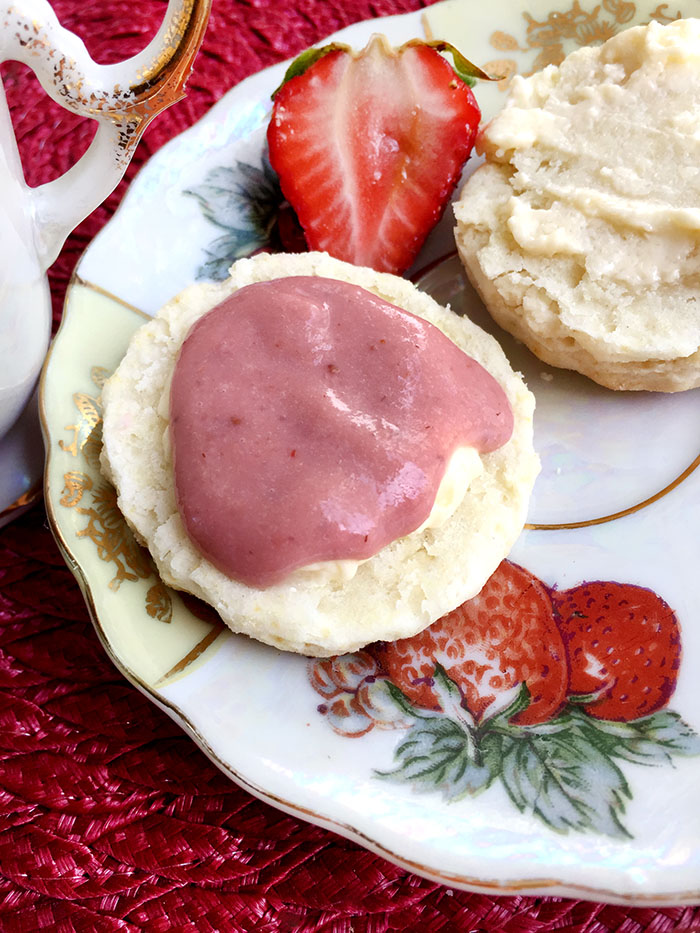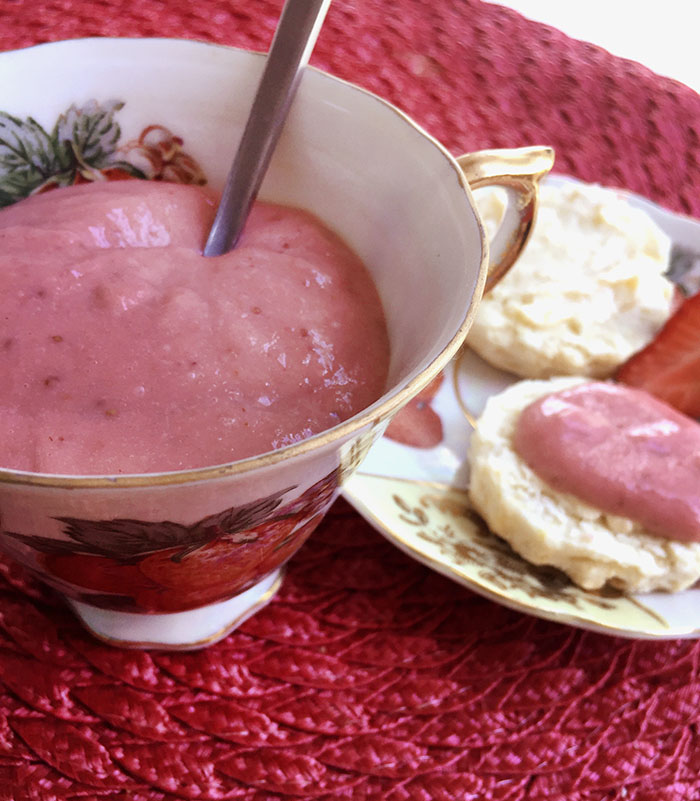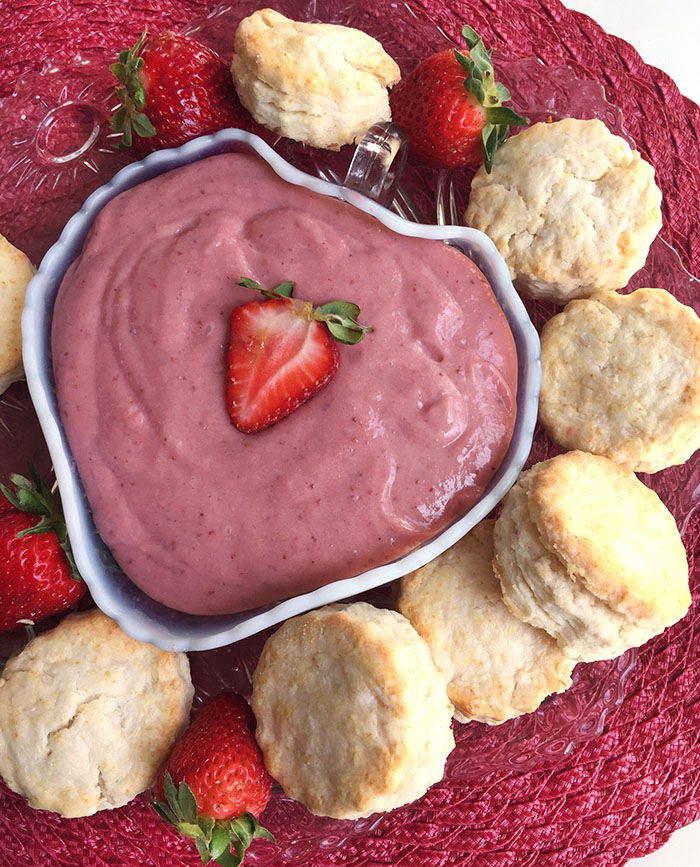
Sometimes I make scones for special occasions. Sometimes the scones — and their accompaniments — are special occasions. The month of May, as well as a good dose of “Downton Abbey,†had kept teatime heavily on my mind and on my radar, although I’m never very far from scones and related recipes.
Sometimes all it takes is the word “curd†to get me going. Making this delicious concoction is so simple and so rewarding, I’ll use any excuse to dabble. I’ve made traditional lemon curd a number of times, as well as orange, which is a little more sweet than tart, but a lovely topping for scones. I’ve pondered rhubarb curd (but usually at the point when I’m ponderig it, I can’t seem to find any rhubarb). But I was stopped in my tracks recently when I wandered across a recipe for strawberry curd. Oh, this would have to happen, all that lush richness of curd, in a berry rendition. On just the right scone. Oh, yes, this had to be.
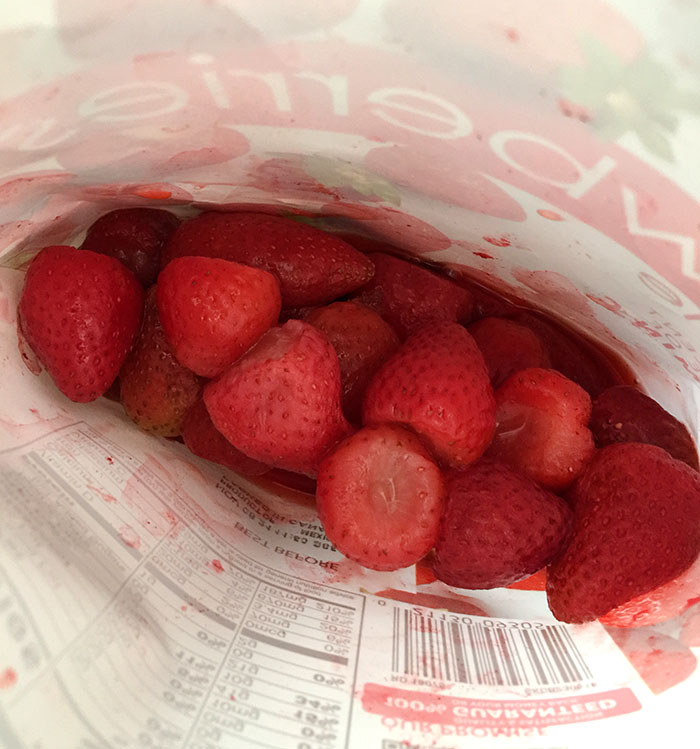
[T]he recipe, from Teatime Magazine (www.teatimemagazine.com) begins with thawed frozen strawberries, easy to find and keep on hand.
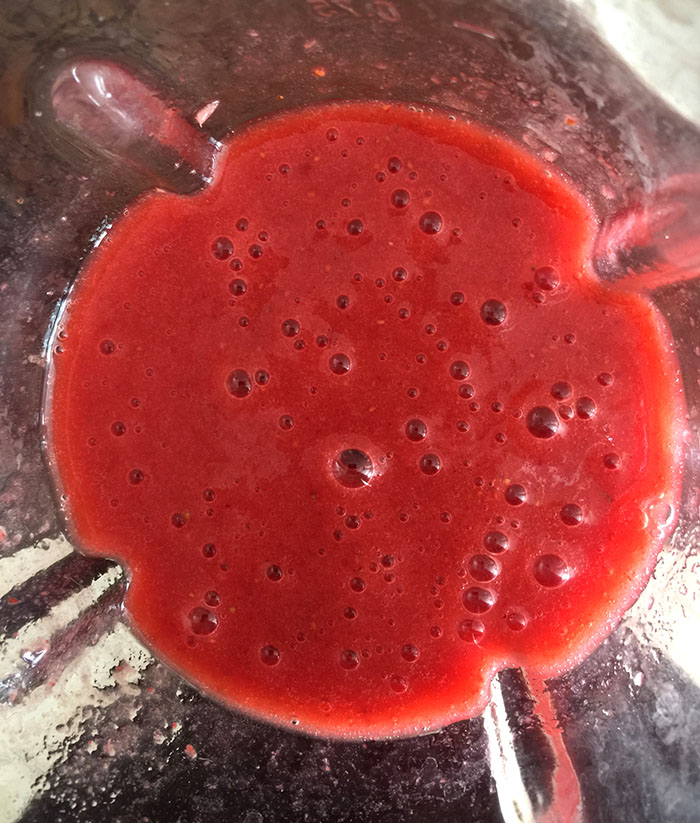
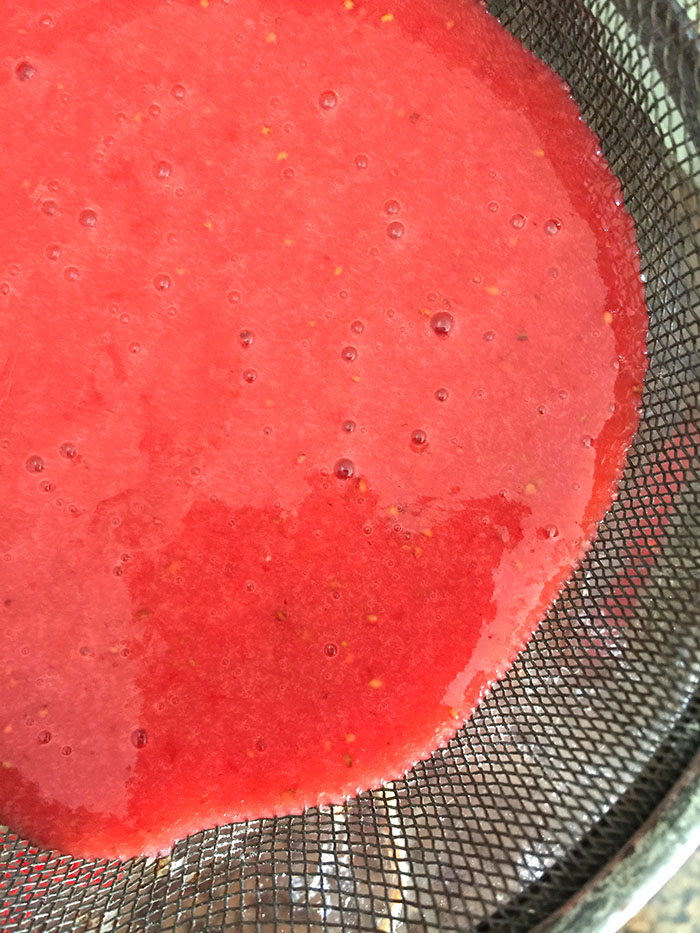
[T]he strawberries are blitzed to a puree in the blender, after which the mixture is run through a fine mesh sieve to strain out the strawberry juice (although I found a few seeds did make it through). The strained strawberry liquid is blended with egg yolks and lemon (and I also used a little orange) juice).
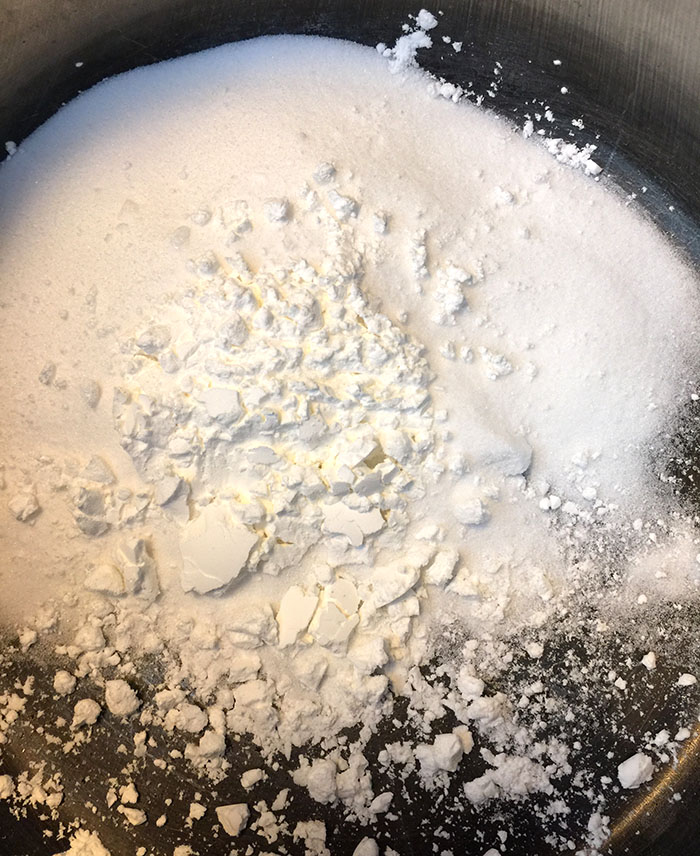
[A] little sugar (1/2 cup) and cornstarch are blended in a saucepan (I also added a pinch of salt).
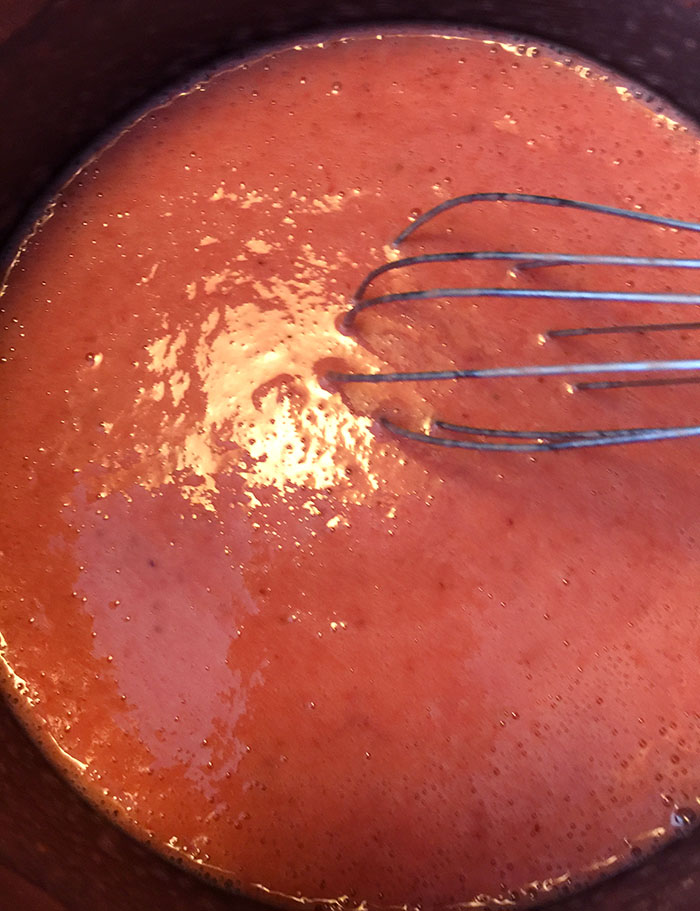
[T]he strawberry mixture is whisked into the sugar-and-cornstarch mixture. All is heated, with constant whisking.
[I]n a few minutes, the curd thickens and bubbles, becoming somewhat pudding-like in consistency. Its pink foaming and the sticky, fruity perfume reminded me of days of jam-making in my mother’s kitchen.
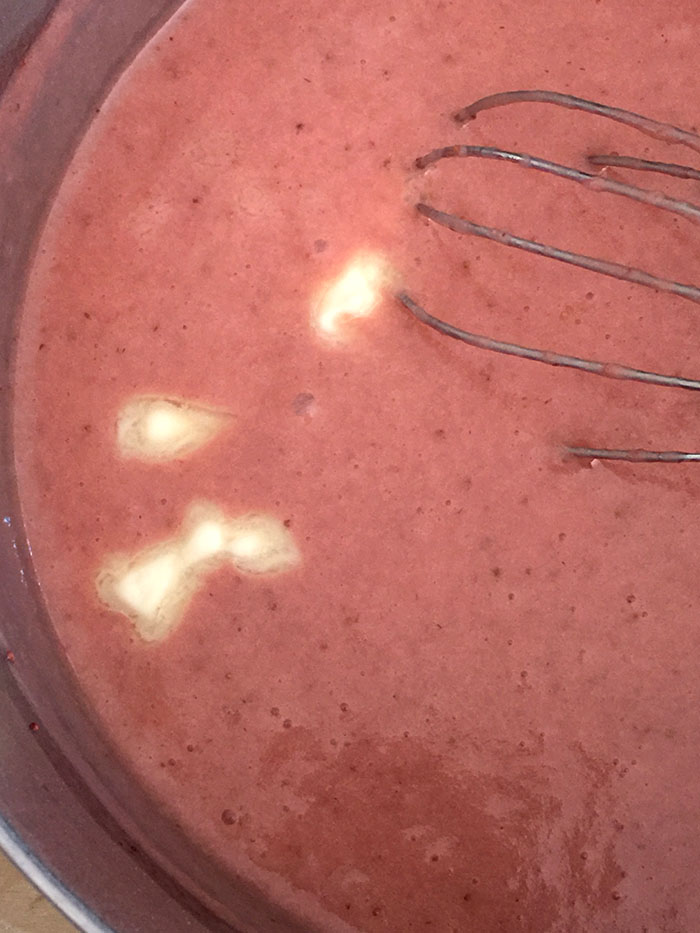
[O]ff the stove, four tablespoons of butter, cut into small pieces, is slowly added, providing melting lushness to the curd.
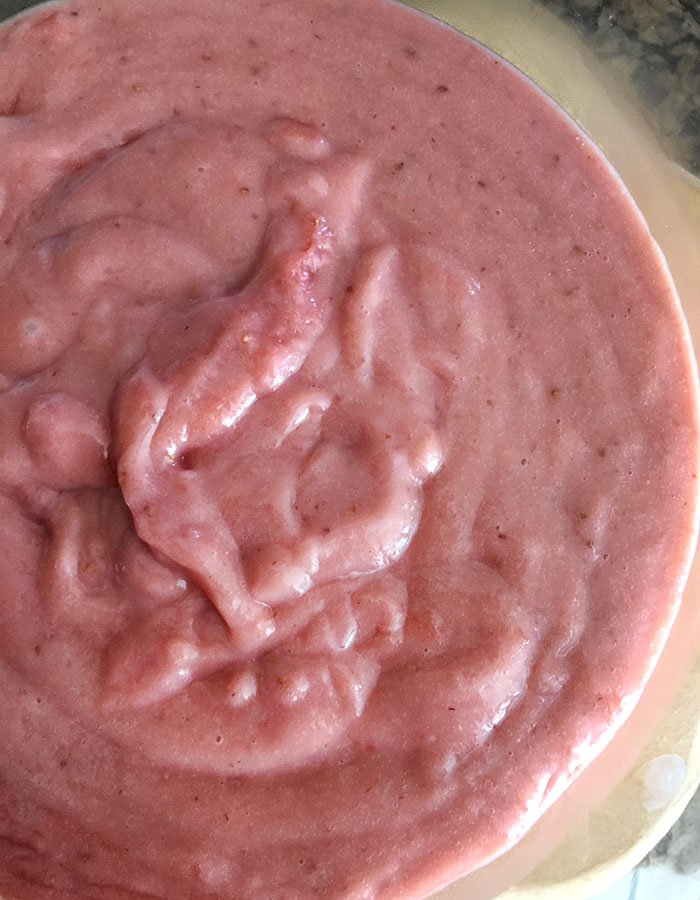
[O]h my, I accidentally dipped my finger in the soft, warm, pink. It was delicious, like a mix of the best jam and butter together, with a hint of citrus as a bright finishing note. I could have eaten it by the spoonful (or in a mini tart, maybe?), but it had to wait for scones.

[I] needed the right kind of scone to meet such plush curd. I opted for tradition — Classic Cream Scones (also from Teatime Magazine), which promised to be light and tender and well-flavored, but not anything that would compete with the curd. These scones used cake flour, which was an ideal option for me — I had just enough cake flour left for these and have been a bit stingy with all-purpose flour lately, as there seems to be a pandemic shortage of it at the grocery.

[A] nice ratio of butter (four tablespoons) went into the the flour mixture (which included a little sugar and a lot of baking powder for lift). I always love the opportunity to use my pastry blender…we’ve had many times together, and it’s one of my most-beloved tools for baking.
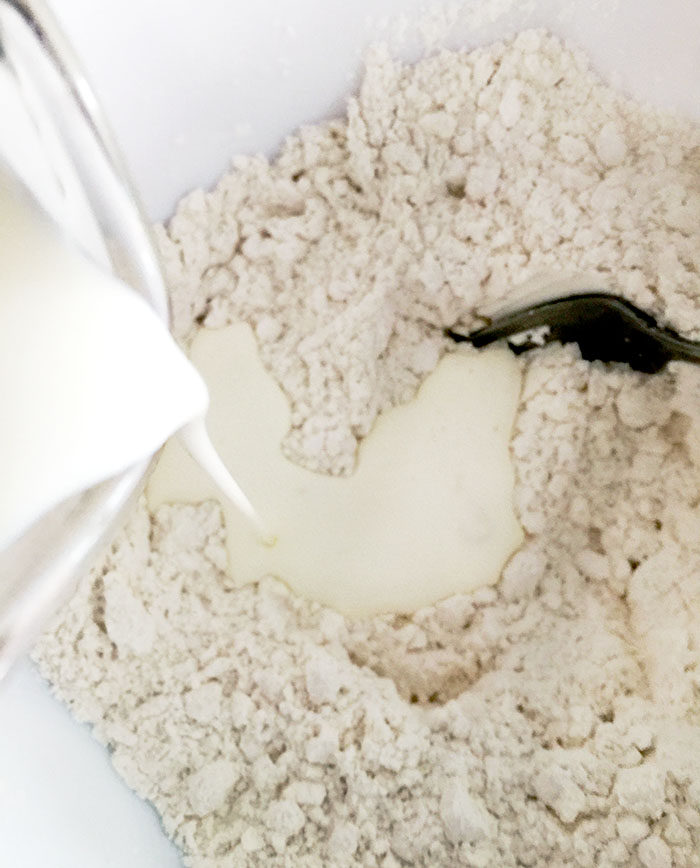
[M]y favorite scone recipes (and the most classic) are those that use cream. Cream seems to provide a tenderness unique to the best scones. Nearly a cup goes into this recipe.
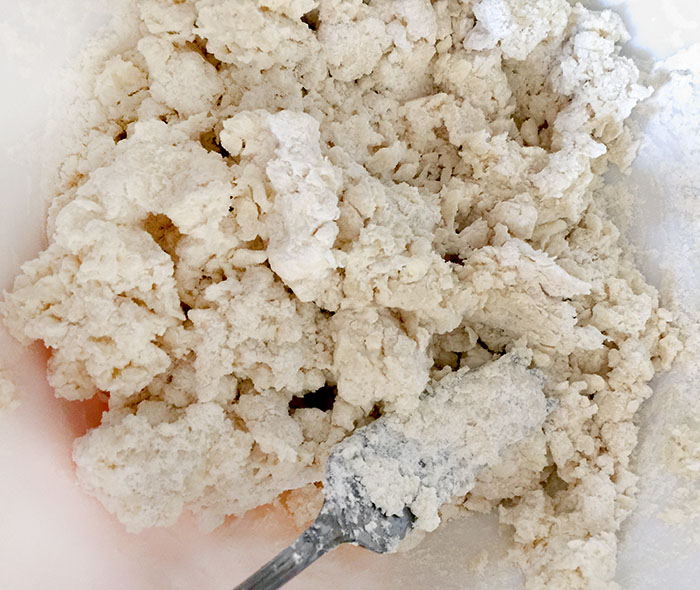
[S]cone doughs often appear quite crumbly when they are first mixed together. This recipe was no exception. I never worry too much about this, as kneading just a little brings the dough together.
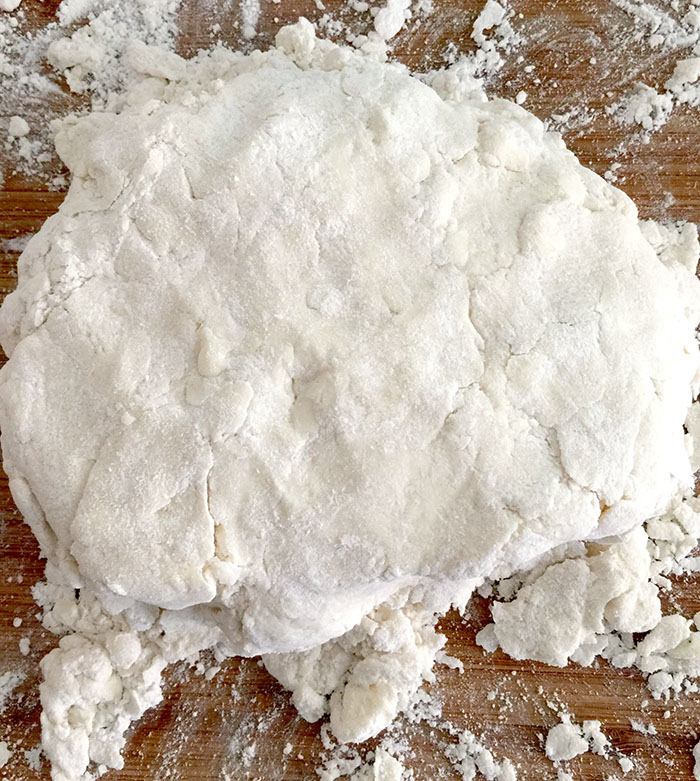
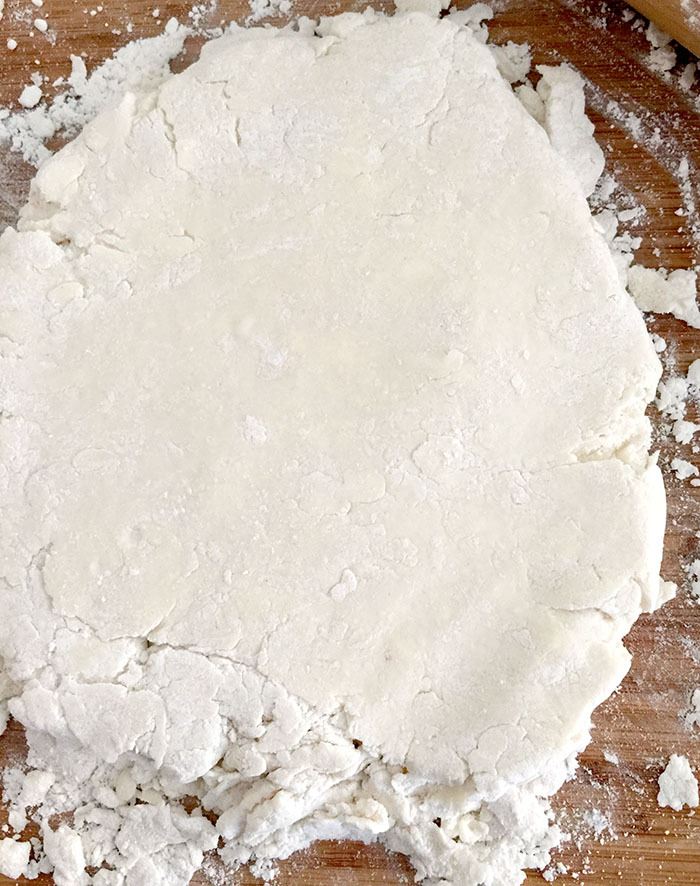
[T]he dough, pale from the cake flour, did come together and rolled out smoothly.
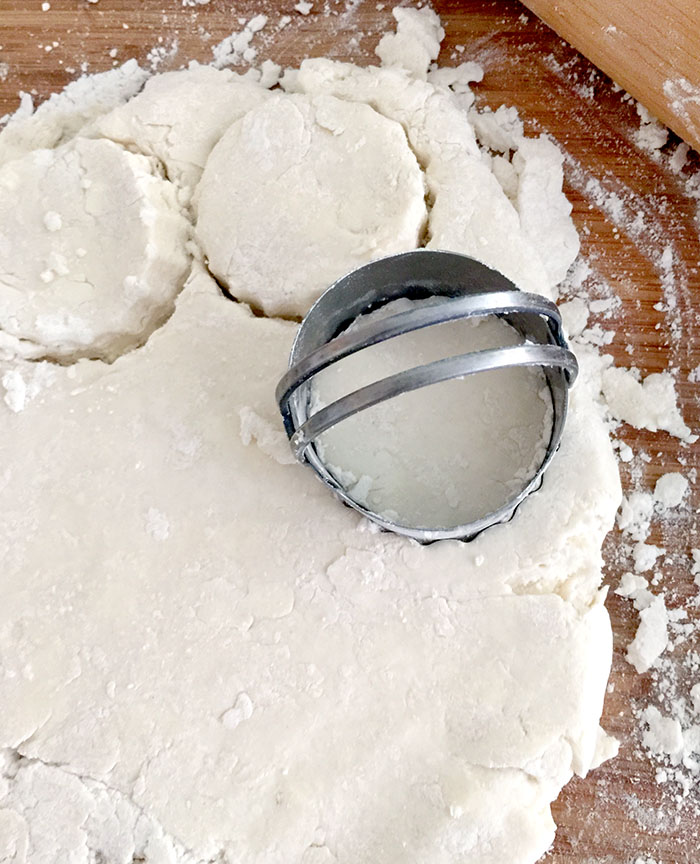
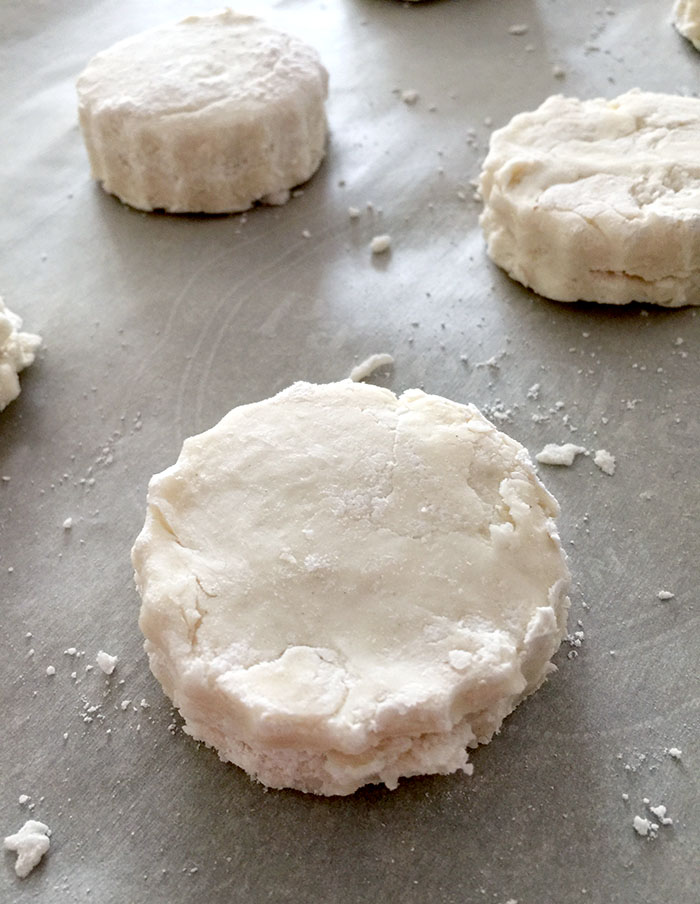
[I] used a small, round scalloped cutter to cut out the scones. The recipe said it made 22 scones…while I kept mine small, I did not end of with nearly that many, more like 12 diminutive rounds.
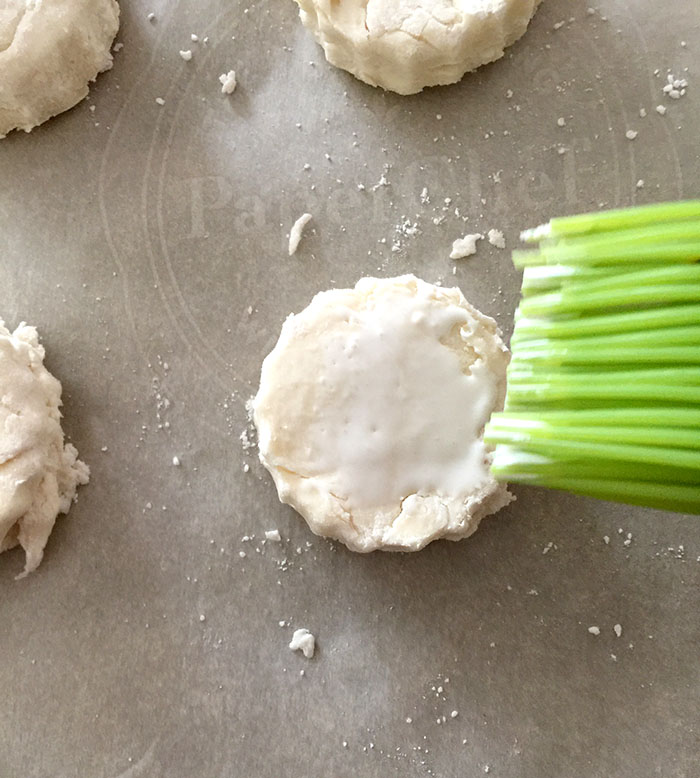
[A] little more cream is brushed on top before baking to give the scones a little sheen and help with browning.
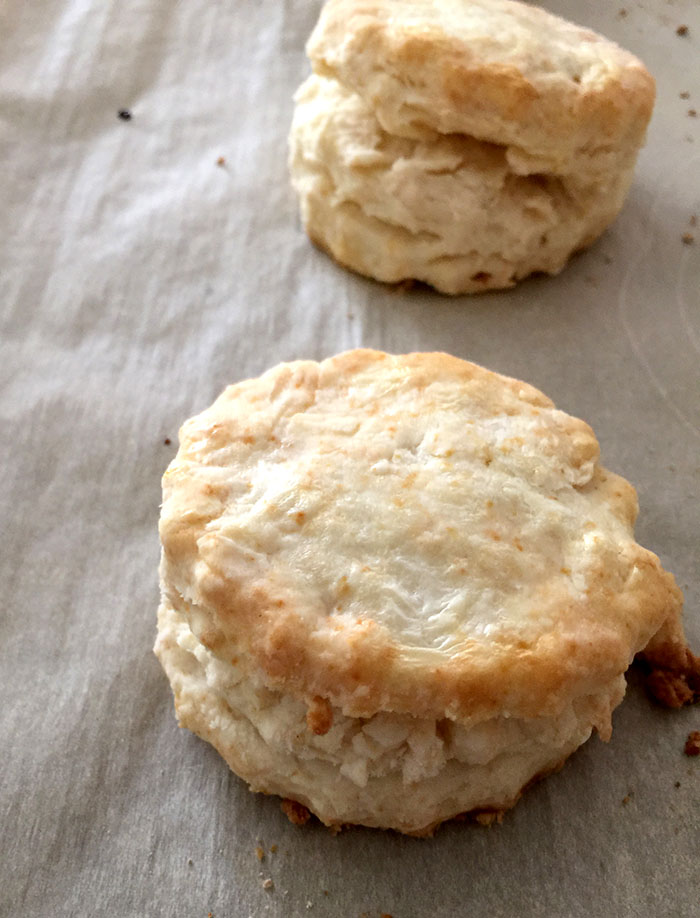
[T]he finished scones lifted nicely, with “natural†layers, and a nice pale golden finish (I recommend a cutter with scalloped edges for nice fluting on the sides, particularly pretty for teas and special occasions).
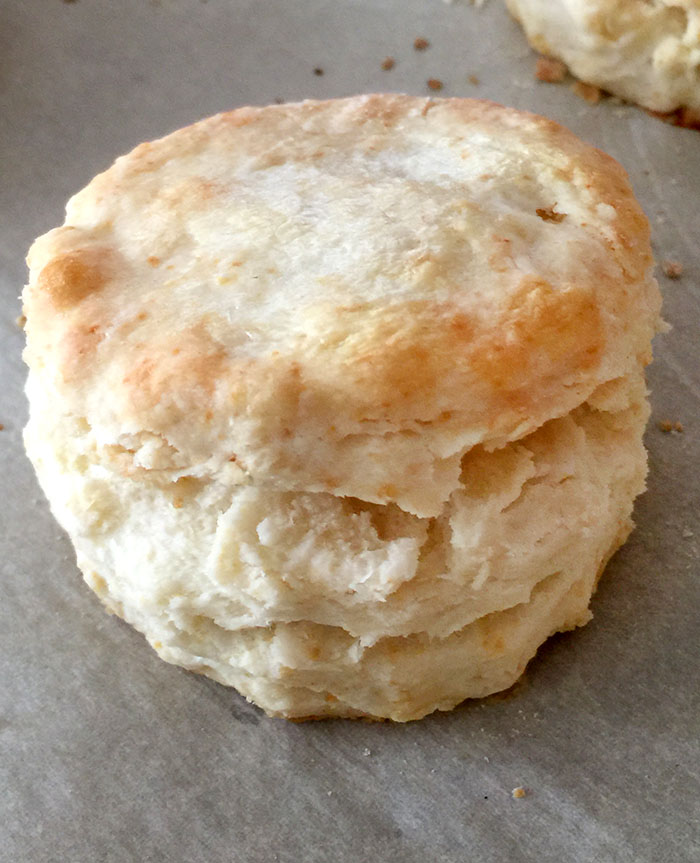
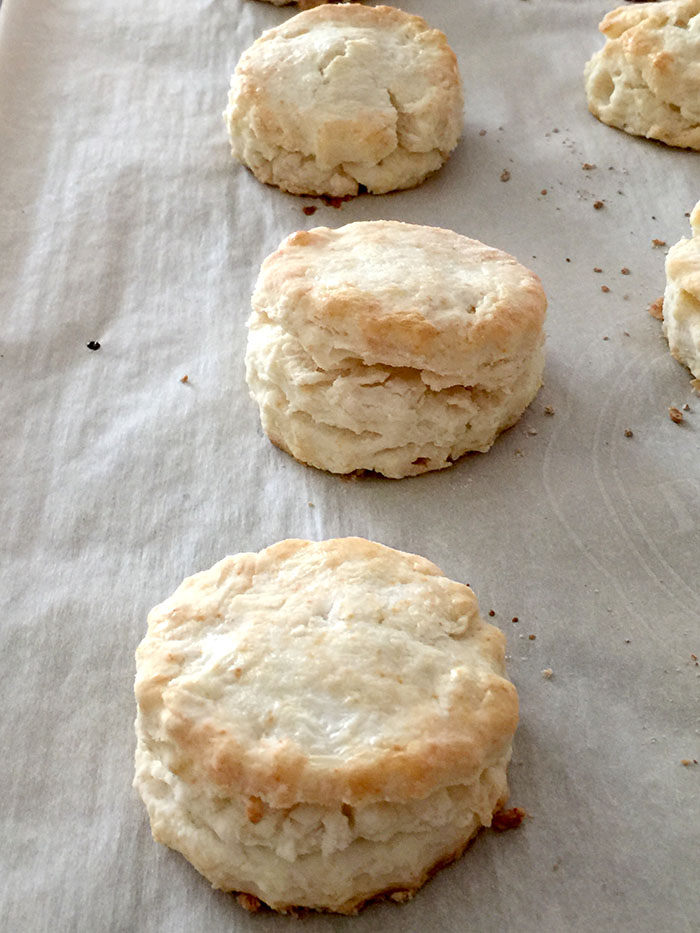
[T]hese scones were destined for that luscious curds, a simple, buttery flaky base to hold the soft decadence of pinkish berry succulence. The dusky rose-pink (an unusual shade for any condiment, I’ll admit) contrasted on the snowy-white scones, but that deep berry sweetness was perfect as a scone topping (or a cheesecake topping, perhaps?) It made an occasion out of no occasion, unless you call a late Friday afternoon in May with steeped tea, little cucumber sandwiches, Classic Cream Scones and Strawberry Curd cause for celebration.
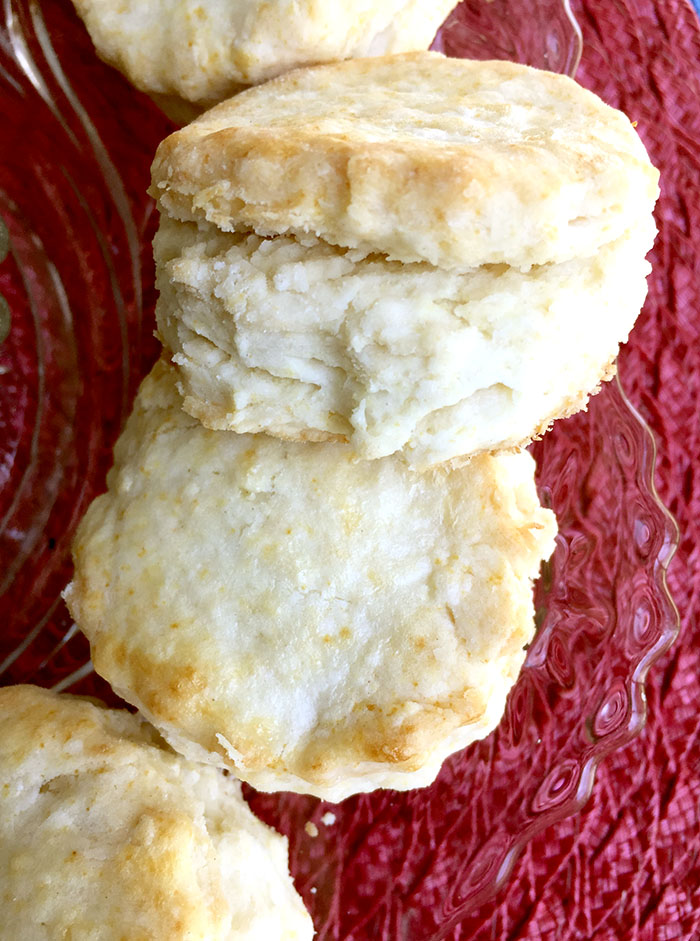
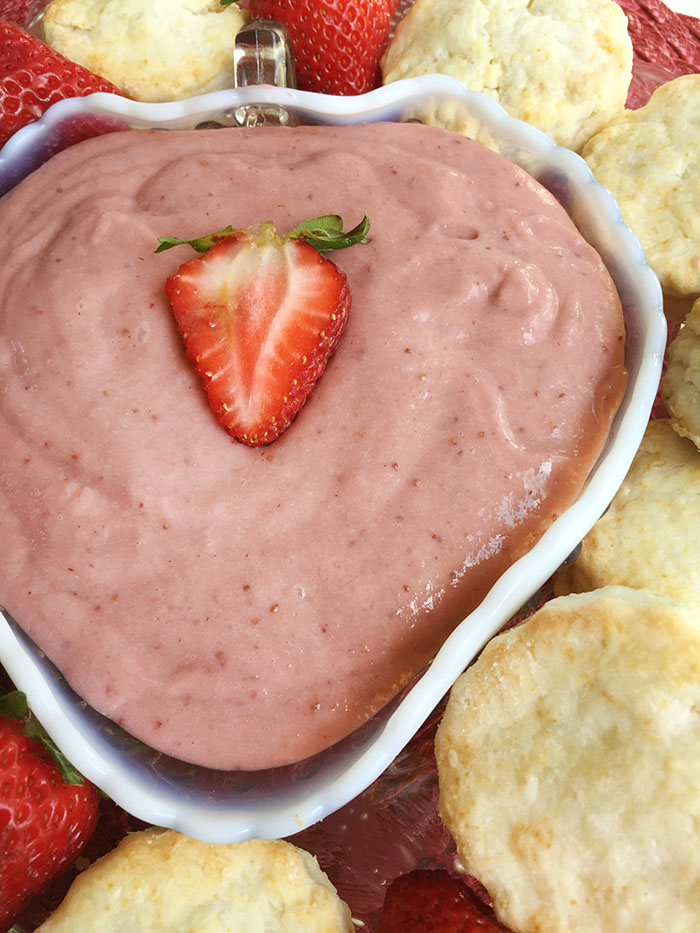
Strawberry Curd
From Teatime Magazine
Makes 1-2/3 cups
- 1 (16-ounce) package frozen sliced strawberries in syrup, thawed
- ½ cup sugar
- 1 tablespoon cornstarch
- 1 tablespoon fresh lemon juice
- 3 large egg yolks, lightly beaten
- ¼ cup butter, cut into pieces
In the work bowl of a food processor or in the container of a blender, puree strawberries until smooth.
Strain through a fine-mesh sieve. Reserve 1 cup strawberry puree.
In a heavy saucepan, combine sugar and cornstarch. Add strawberry puree, lemon juice, and egg yolks.
Cook over medium heat until thickened, 5 to 7 minutes, whisking constantly.
Remove from heat, and gradually add butter, whisking until melted.
Let mixture cool slightly. Cover, and refrigerate for at least 2 hours and up to 2 days.
For the Classic Cream Scones recipe, go to: https://www.teatimemagazine.com/classic-cream-scones-recipe/.
